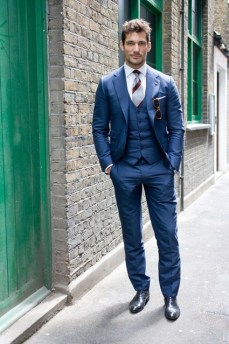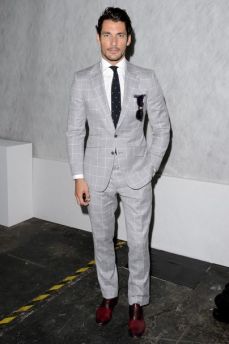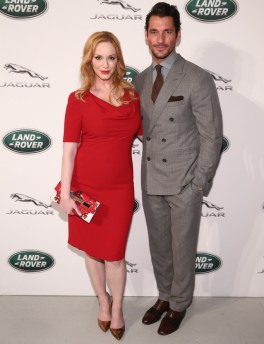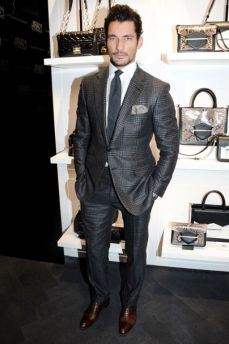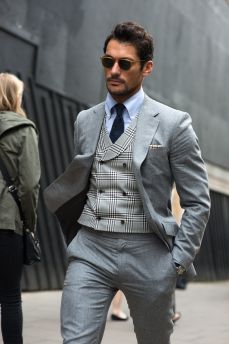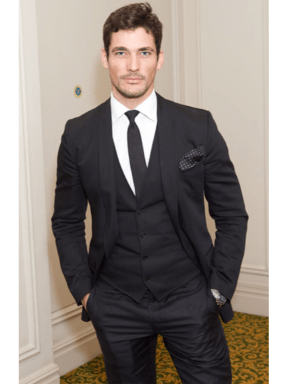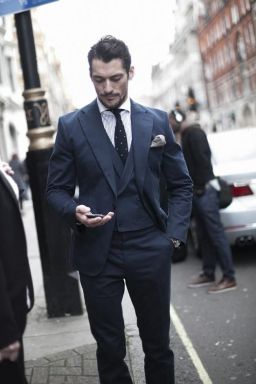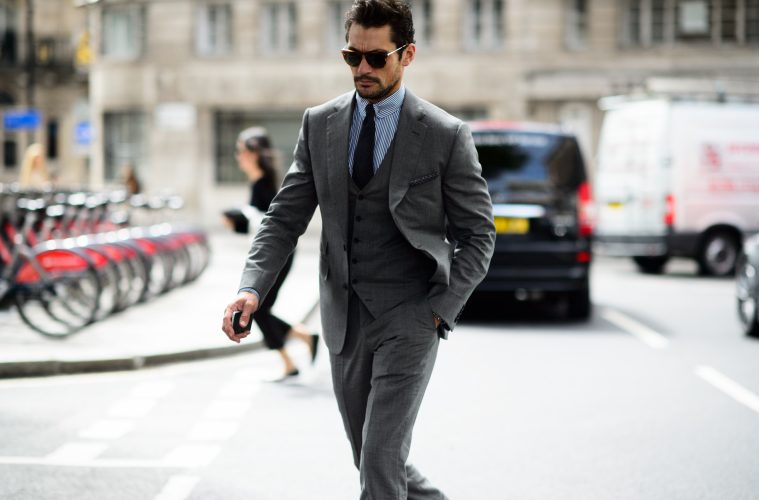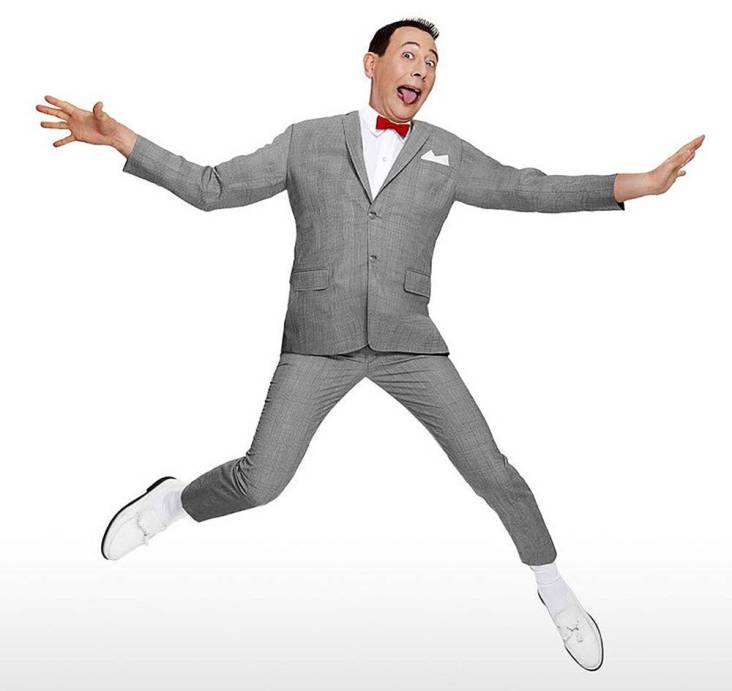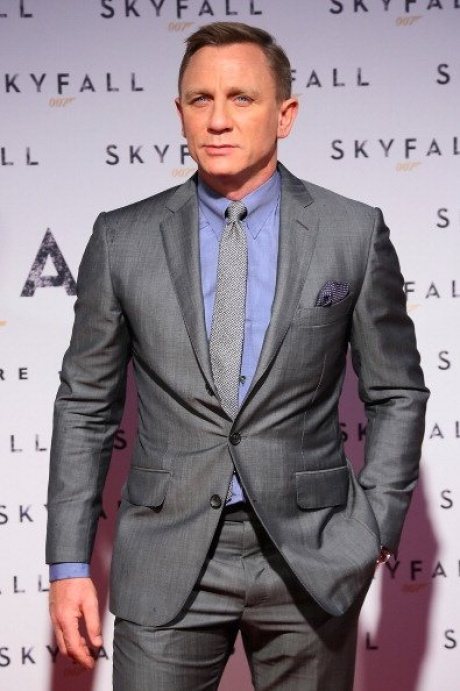I’ve never seen my father in a suit. Granted, he was wearing one in his wedding photo, but it was a close-up on my parents’ glowing faces. Growing up, we never had the occasion to wear a suit, nor did anyone else we came in contact with. The most formal piece of clothing I’ve worn till then was an emerald green blazer for a school band competition (shudders).
It wasn’t until my secondary school prom that I was introduced to a suit. As in, matching blazer and pants. My parents brought me to good old G2000, and we got a somewhat baggy slate grey blazer (on sale!) and a matching pair of somewhat baggy pants. Note: I was a scrawny 52kg at 1.7m, and 16 years of age. Now would be a good time to share a photo of that evening, only I’ve resolved never to let anyone, including myself, revisit that atrocity.
Two years later when it came time for Junior College prom, I remember asserting my nascent sartorial flair by insisting it not be a regular black suit. I want pinstripes, sir, I said, to the greying tailor running a measuring tape up into my crotch. He complied, adding – I’m going to make this suit larger, so you can wear it for a longer time in the future, ah-boy, when you gain some weight.
Cue red flashing lights, a panicked flurry of potentially embarrassing prom photos filling my mind, of myself looking clownish or downright nerdy, circulating online forever… and I actually said OK. Because, practicality, you know? I imagined I’d have many more chances to wear a suit, and what a waste if only my 18 year old self could wear it. Plus, I had big plans to pack on more weight. Army days were looming for crying out loud! Apparently my sartorial flair didn’t extend to fit. FIT, I assure you, in block letters and bold print, IS MOST CRUCIAL for looking swell in a suit.
In case you were wondering, no. No photos of that episode, either. What I do have for you, however, is a set of old-school suit rules you should know.
Getting the right fit
Number one, as I’ve mentioned, is fit. But how should it fit? For traditionalists, skinny is a no-go. Neither is baggy. The point of a suit is to complement your body shape, not exaggerate it. Photos do a better job at illustrating this point:
Yes, creepy ‘80s children’s entertainer and off-duty James Bond made the same mistake.
When a suit is cut too slim, it bunches up around the waist when buttoned. The suit does the same when you raise your arms, and divots form at the end of your shoulders, because the armholes are too high. If your pocket linings on your trousers make raised impressions on the outside, or if your pockets bunch up when you walk, your trousers are too slim. Same thing if they get crinkly in the back from simply bending your knee (if that’s even possible).
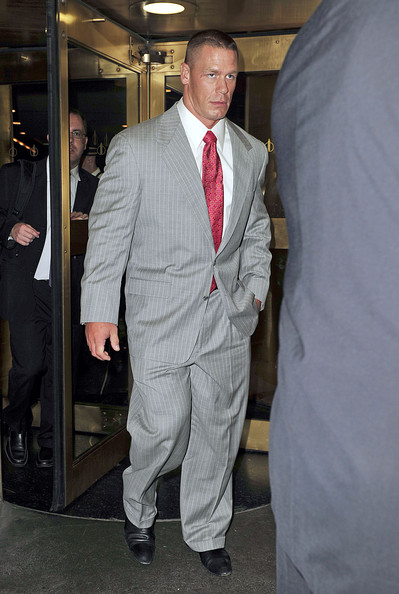
Can we all agree that John Cena looks better without that outfit?
On the baggy end of things, the excess material on your jacket and your trousers will tend to drape or ripple, appearing listless. If the shoulders are too wide, they could either slouch, or make your neck and head look awkwardly small. Your pants will tend to “flap” while you’re walking, especially from the knee down, and may obscure your shoes too much.
A well-fitted suit will not do any of the above. You should be able to move freely in your jacket, and you should be able to comfortable stick both hands into your pockets, so you can look insouciantly stylish. If you’re sporting a three-piece suit, make sure the waistcoat is fitted close to your body – the fabric should not bunch up when buttoned up.
Getting the right length
The right fit usually brings with it the right length – but it pays to be certain. As a general rule, the length of your jacket should never exceed the knuckle of your thumb, when your arms are down by your side. This, of course, depends on your torso-to-legs ratio. Without getting into the weeds, if your jacket ends between mid-fly and where the two legs of your pants meet near your crotch, you’re good.
Your jacket’s sleeves should end before your shirtsleeves, which in turn should end just as your wrist becomes your hand. The point is to allow your shirtsleeve to peek out a little, offering some visual interest, and for your watch to be visible when you bend your arm to check the time.
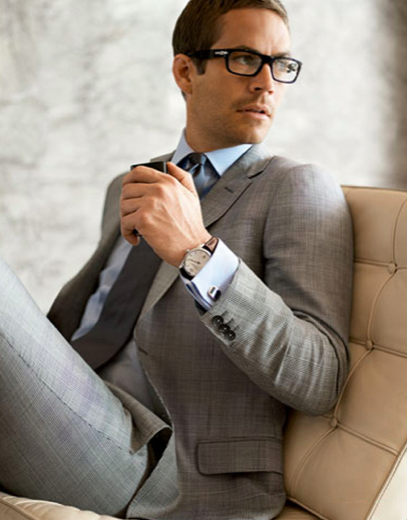
Now for your trousers: it’s all about personal style. If you want to look classically handsome, have the pant legs “break” onto your shoes (like waves breaking onto shore). Imagine the cuff just touching the shoe when you’re standing – the pants should then be just a tad longer. If you’re wearing a three-piece suit, the waistcoat should be long enough to obscure the belt loops of your pants – no longer.
Last but not least, the tie. The knot should fit snugly to a buttoned collar, not too large, not too small. The tip of your tie should end just above the buckle of your belt. If you’re wearing a waistcoat, the tie should never peek out at the bottom.
Getting everything else right
Hang on – a few more things to look out for. This is, after all, a suit you’re talking about. There’s some etiquette when it comes to buttoning your suit. If you’re walking briskly or sitting down, unbutton the jacket. Otherwise, keep them buttoned, but never button the bottommost button. That last bit doesn’t, however, always apply to a double-breasted suit. If you’re wearing a three-piece suit, leave the bottommost button in the waistcoast undone too.
Always open the vents in your suit jacket. If your jacket has pocket flaps, leave them tucked in – the only time they should be out is if you’re caught in the rain. If you’re wearing a tie bar, make sure it’s narrower than your tie. It should go near the bottom of your sternum (the central bone between your ribs). Side note: shoulder pads are for business suits only. Use sparingly – they shouldn’t make your shoulders look boxy or stiff.
What about color and fabric?
Boy oh boy, this can be a loooong conversation. For the less adventurous and/or more traditional, stick to the big three: black, gray, or navy. Among them, navy is your most versatile option – formal enough for business, but also suitable for more casual occasions. When it comes to prints, the subtler the better. Pinstripes are a good option should you prefer something less ordinary, as are classic checks like glen plaid (also known as Prince of Wales plaid).
For beginners, the jacket and pants should be in the same color and fabric print. For the shirt, white is always classy – just make sure its weight complements your jacket. For example, a linen shirt can go with a linen jacket, but not with a business jacket. For that, a heavier cotton or Oxford shirt works better. The waistcoat can be the same color and fabric print too, but a contrasting shade of the main color.
For Singapore’s weather, a linen jacket in cream is a lightweight but stylish option. See this article for a more in-depth look into wearing suits in Singapore!
The suit is a modern gentleman’s armor. It flatters a man the way good lingerie does on women. In fact, it’s better than lingerie, because it can cover many faults, rather than exposing them. Unless of course you missed this primer and ended up looking like a clown for your proms (yes, plural, and yes, still sore). Now you don’t have an excuse. Especially after you browse through more photos of David Gandy, which I promise were chosen only for the suits. Really. Just the suits.
